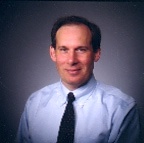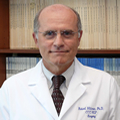Home About Us
About Us Meet NIDCD Scientists and Grantees
Meet NIDCD Scientists and Grantees Meet NIDCD Scientists and Grantees
Meet NIDCD Scientists and Grantees
Meet NIDCD Scientists and Grantees
A brief look at the work and ideas of some of the NIDCD's own researchers, as well as scientists whose work is funded by the NIDCD. You can also go to our Science Faculty page to see a complete list of NIDCD scientists and the research they do.

Dennis Drayna, Ph.D., Chief, Section on Systems Biology of Communication Disorders,Laboratory of Communication Disorders
Text interview with Dennis Drayna, Ph.D.
Dr. Drayna's team, along with colleagues from the University of Punjab, the Hollins Communications Research Institute, the National Human Genome Research Institute, and the NIH Clinical Center, recently published a study that identified three genes as a source of stuttering in volunteers from Pakistan, the U.S., and England. Read the press release here. Dr. Drayna answered some questions about his study (text-only).
 Ingo R. Titze, Ph.D., NIDCD Grantee
Ingo R. Titze, Ph.D., NIDCD Grantee
Dr. Titze directs the National Center for Voice and Speech, located at the Denver Center for the Performing Arts and University of Iowa. We talked to Dr. Titze about his background, his research, and Pavarobotti (a voice simulator/singing robot that Dr. Titze designed).
- Video: Pavarobotti, a voice simulator/singing robot designed by Dr. Titze
- Interview (text only): Musically Gifted Engineer Hits a High Note in Voice Research
 Robert Hillman, Ph.D., Harvard Medical School; research director of the Center for Laryngeal Surgery and Voice Rehabilitation at Massachusetts General Hospital
Robert Hillman, Ph.D., Harvard Medical School; research director of the Center for Laryngeal Surgery and Voice Rehabilitation at Massachusetts General Hospital
Article on research conducted by Robert Hillman, Ph.D.
This NIDCD-supported scientist has developed a system that uses a smart phone app and a miniature recording device to keep track of how people use their voices for a full week’s worth of talking. Read about the device—so small that rocker Steven Tyler once wore it during a concert—and how it could advance the accuracy of voice disorder diagnosis here.
 Kittie Verdolini Abbot, Ph.D., professor of communication science and disorders in the School of Health and Rehabilitation Services at the University of Pittsburgh
Kittie Verdolini Abbot, Ph.D., professor of communication science and disorders in the School of Health and Rehabilitation Services at the University of Pittsburgh
Text question-and-answer session with Kittie Verdolini Abbot, Ph.D.
Read a Q & A with Kittie Verdolini Abbot, Ph.D., a professor of communication science and disorders in the School of Health and Rehabilitation Services at the University of Pittsburgh, about the special challenges teachers face when it comes to protecting their voices.
Top